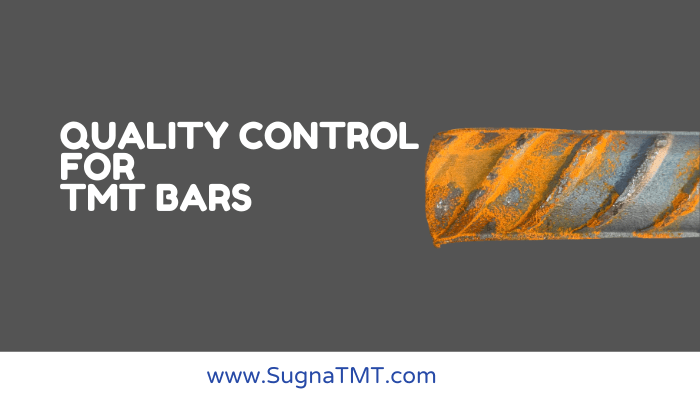From domestic items like refrigerators and televisions to cutlery and industrial gear, steel is used in a wide variety of products. But just as with any other material, steel production is not always going to be fault-free, and mistakes could happen at any point in the process.
Quality control is crucial as a result. In this manual, we’ll explain how to do steel quality control and assist you in evaluating the steel’s quality.
Best Ways for Quality Control for TMT Bars

Steel’s strength and durability can be tested using a variety of techniques. Below, I’ve summarized several quality control tests that may be performed on steel for the steel business.
1. Compression of Steel
Small cylinders, blocks, or strips are compressed to evaluate a material’s capacity for substantial plastic deformations, also known as malleability in mechanical terms, and its limits.
2. Metallurgical Testing for Steel.
Metallurgical testing is referred to in the steel quality checklist as the process of putting steel through mechanical, thermal, or chemical procedures to evaluate its properties.
The goal of metallurgical testing is to gain a better understanding of the structure and makeup of the steel to predict how it will perform under various conditions.
3. Ductility
The measurement alongside elongation as well as the decrease in the area of a tensile test can be easily used to make the assessment of the material’s ductility. In other words, material ductility can be defined as the amount of deformation that is feasible to the steel before fracture or failure.
4. Fatigue Test on Steel
The fatigue test is used to assess how materials will respond to repeated applications of varying loads. It is used to model the kinds of stresses that naturally emerge in materials during normal service.
5. The Corrosion Test on Steel
In corrosion testing, the material is destroyed through chemical, electrochemical, or metallurgical interactions with the environment. To mimic actual use settings, many sorts of environmental exposure tests are conducted.
6. Test the Radiography on Steel
Rays and short-wavelength electromagnetic waves, which may pass through thick layers of metal, are employed in the radiography of steel materials to check for shrinkage gaps in castings and welded joints.
7. Creep tests
Creep tests are used to identify the ongoing change in a material’s deformation when pushed below the yield strength at high temperatures. This is crucial when designing components that will be subjected to high temperatures.
8. Wear resistance
Due to its complexity, wear resistance is rarely measured by standardized tests. One test involves moving a pin against a disc made of the test material, known as the “pin on disc” method. Wear testing equipment is often created to mimic real-world service conditions and is application-specific.
Final Words
To sum up, to prevent fatigue or failure of steel structures, quality steel is essential. Weakness may be the result of manufacturing issues, especially if the surface is folded or molded.
Steel quality checks are a crucial component of steel quality control. Its goal is to ensure that the specifications’ requirements are being followed. A steel structure’s durability can be greatly diminished if the processes, procedures, and materials needed to manufacture it are not strictly followed.

